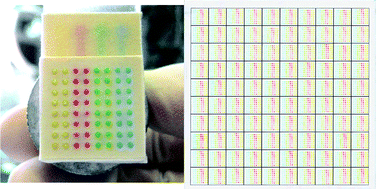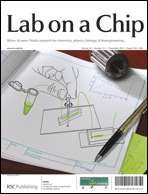This communication describes a simple method for printing aqueous solutions with millimeter-scale patterns on a variety of substrates using an easily fabricated, paper-based microfluidic device (a paper-based “stamp”) as a contact printing device. The device is made from inexpensive materials, and it is easily assembled by hand; this method is thus accessible to a wide range of laboratories and budgets. A single device was used to print over 2500 spots in less than three minutes at a density of 16 spots per square centimetre. This method provides a new tool to pattern biochemicals—reagents, antigens, proteins, and DNA—on planar substrates. The accuracy of the volume of fluid delivered in simple paper-to-paper printing is low, and although the pattern transfer is rapid, it is better suited for qualitative than accurate, quantitative work. By patterning the paper to which the transfer occurs using wax printing or an equivalent technique, accuracy increases substantially.
You have access to this article
 Please wait while we load your content...
Something went wrong. Try again?
Please wait while we load your content...
Something went wrong. Try again?


 Please wait while we load your content...
Please wait while we load your content...